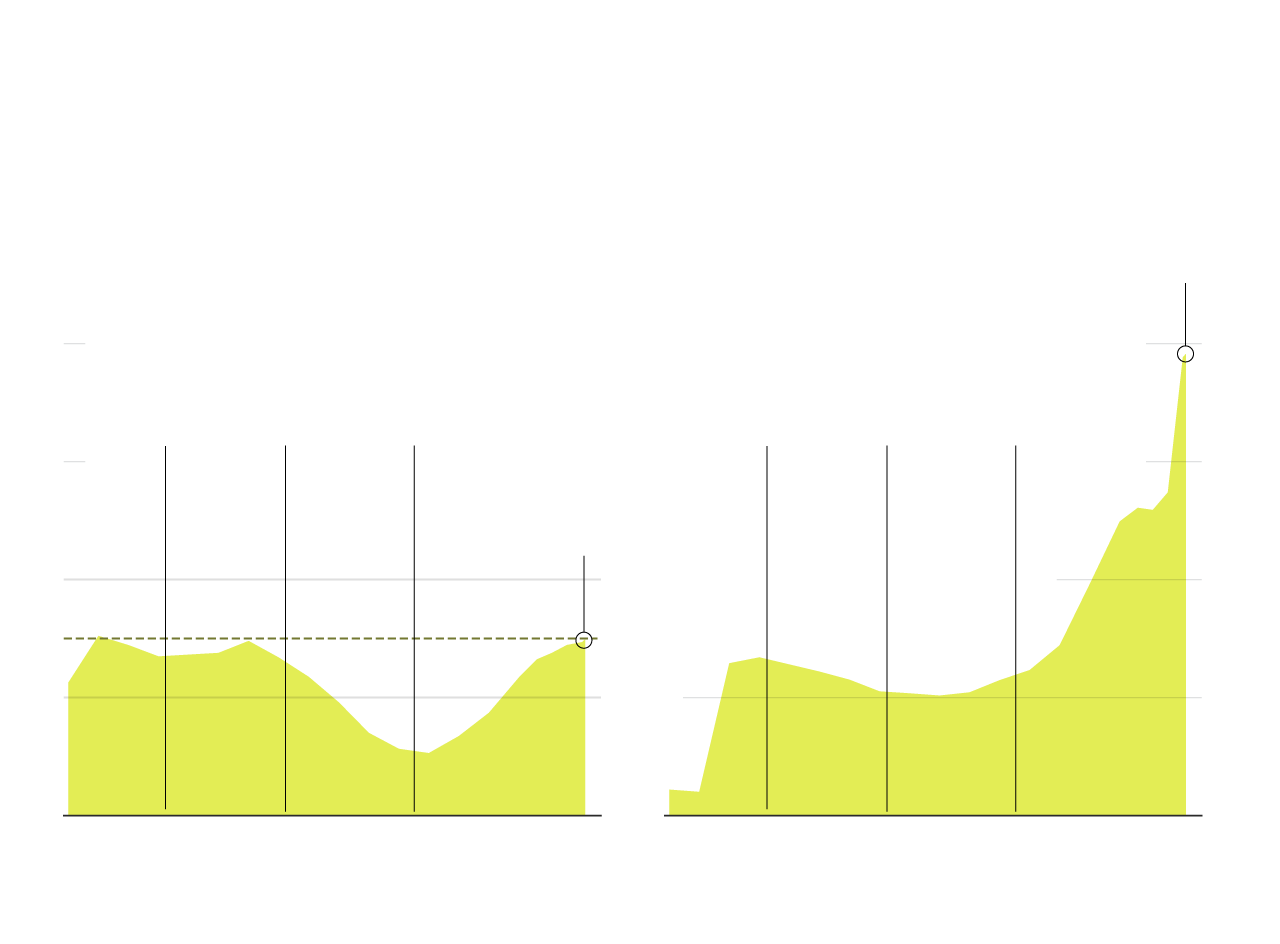In an op-ed on Gen Z’s unique usage of slang, internet linguist Adam Aleksic says not to be surprised if the generation’s youths soon start messaging about actually rapturous laughter. It’s all part of the process known as semantic bleaching — by which, Aleksic writes, “the more we use a charged word, the more its original meaning is diluted until it’s lost altogether and needs to be replaced.”
It’s an old phenomenon. Semantic bleaching is what befell, for example, the word “very,” which used to mean “truthfully” but after oversaturation came to mean, well, “very.” Thanks to the high speed of the internet, emoji slang for laughter is just losing its bite far more quickly. Bet.
One way to know that the archaic (ca. 2013) “YOLO” — as in “you only live once” — is well and truly dead as slang is to see it crop up in Heather Long’s latest column in the form of “the YOLO economy.” But even if the term is obsolete, the mentality behind it is helping to bring downtowns back into the conversation.
Americans are still loath to go back to urban cores during the workday, but Heather reports that after-hours activities are booming in a lot of cities as “Americans are spending eagerly on concerts, vacations, wellness days and other splurges.”
A lot of those YOLO-y endeavors are already in downtowns. If cities want to sustain their nascent recovery, Heather writes, they should lean into offering even more. Otherwise, they’ll just keep on liiiiiiiiterally dying — and not in the fun way!
Chaser: George Will is following a TikTok dance that’s been trending for too long: the government’s stomping all over the site in the name of national security.
Keep your tired, your poor
Tackling the history of anti-immigrant sentiment in the United States is difficult because, unfortunately, it is a rather long history. Eduardo Porter, however, does so adroitly in an essay that takes us from the 19th-century Chinese Exclusion Act up to the immigration fights of today; Youyou Zhou’s data visualizations mean that it’s beautifully done, too.
The story of American xenophobia might feel familiar, but there are still surprises in Eduardo’s analysis, including his observation of the sly way post-civil-rights-era leaders tried to preserve a predominantly European bloodstream even as they championed eliminating discrimination.
There’s also a forbidding pattern that Eduardo notes: Throughout history, restrictive immigration laws have come around shortly after the U.S. foreign-born population tops 15 percent; the country once again hit that threshold about two years ago.
Restrictive immigration laws
were passed after the foreign-born
population reached 15 percent.
Share of the population born outside the United States
Chinese
Exclusion
Act, 1882
Ultimately, policies
meant to preserve
a White America failed.
Share of the population that is not White
Chinese
Exclusion
Act, 1882
Source: Analysis of U.S. Census and American
Community Survey data through IPMUS

Restrictive immigration laws were passed
after the foreign-born population
reached 15 percent.
Share of the population born outside the United States
Chinese
Exclusion
Act, 1882
Ultimately, policies meant to preserve
a White America failed.
Share of the population that is not White
Chinese
Exclusion
Act, 1882
Source: Analysis of U.S. Census and American Community Survey
data through IPMUS

Restrictive immigration laws
were passed after the foreign-born
population reached 15 percent.
Ultimately, policies
meant to preserve
a White America failed.
Share of the population born outside the United States
Share of the population that is not White
Chinese
Exclusion
Act, 1882
Chinese
Exclusion
Act, 1882
Source: Analysis of U.S. Census and American Community Survey data through IPMUS

Restrictive immigration laws
were passed after the foreign-born
population reached 15 percent.
Ultimately, policies
meant to preserve
a White America failed.
Share of the population born outside the United States
Share of the population that is not White
Chinese
Exclusion
Act, 1882
Chinese
Exclusion
Act, 1882
Source: Analysis of U.S. Census and American Community Survey data through IPMUS
As reactionary politicians (particularly former president Donald Trump) hawk harsh policies, Eduardo reminds the country that one thing is just as true now as it’s been for nearly a century and a half: “There is no way America can reconcile the sentiments embodied by the Statue of Liberty — ‘Give me your tired, your poor,’ etc. — with its deep-seated fear that immigrants will reshape its ethnic makeup, its identity and the balance of political power.”
Chaser: John Danforth, William Cohen and Alan Simpson — three former GOP senators — don’t want to vote for Trump. They don’t want to vote for President Biden, either. So what’s a “traditional Republican” to do?
To ask what Israel’s endgame is in the war in Gaza suggests it has one. Gene Robinson writes that, at least until now, the country’s strategy, such as it is, has been “shortsighted and senseless,” ultimately “lunacy.”
What good will an all-out assault on the Palestinian refuge of Rafah do? Will it bring hostages home? Will it lessen civilian suffering? Gene asks, “How is any of this making Israel more secure?”
David Ignatius finally sees some signs for hope in the statements of Israeli Defense Minister Yoav Gallant, who is, in fact, focused on “the day after” in Gaza. David and the Biden administration alike favor Gallant’s vision for postwar Palestinian security, but it will be tricky to pull off.
The first big roadblock? Gallant’s own prime minister.
- States see legalized sports betting as a tax windfall, the Editorial Board writes — but at what cost?
- In the latest episode of our “Impromptu” podcast, our columnists discuss the underappreciated way the women’s movement has played out in women’s sports. (Caitlin Clark, of course, crops up.)
- Karen Attiah has been following this year’s buffet of hip-hop beef. She writes that they are uncomfortable reminders of real-life misogyny and violence.
It’s a goodbye. It’s a haiku. It’s … The Bye-Ku.
A melting pot, once lidded
Have your own newsy haiku? Email it to me, along with any questions/comments/ambiguities. See you tomorrow!
Credit: Source link




